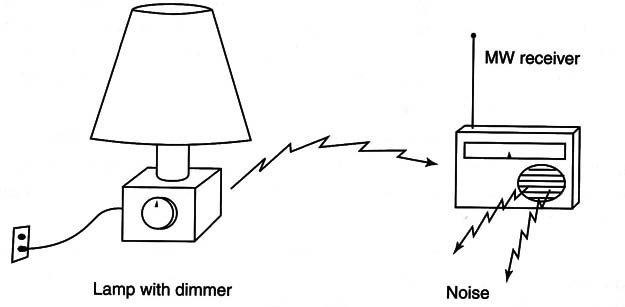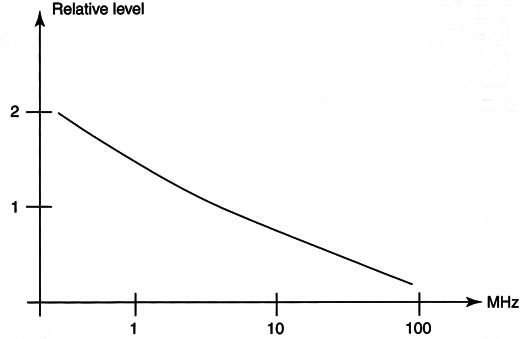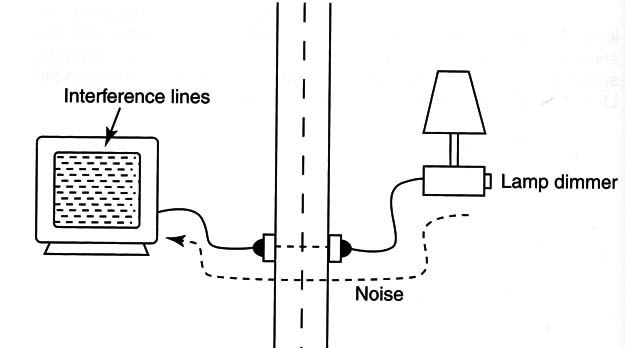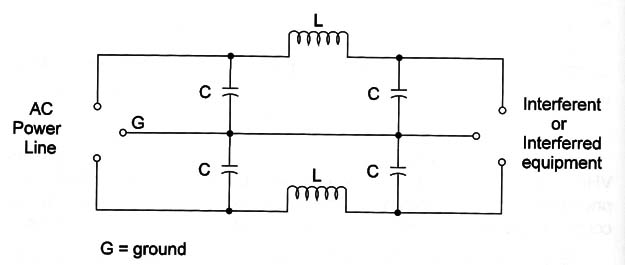EMI or RFl (Radio Frequency Interference) is the interference caused by undesirable radio signals produced by devices like thyristors affecting the operation of many sensitive pieces of electronic equipment.
When an SCR or triac is used in a circuit as power control, the high-speed changes of the current in a load result in the generation of a series of harmonically related radio-frequency signals.
The magnitude of the fundamental signal is proportional to the magnitude of the controlled current, and in a larger part of the cases, can be great enough to cause interference in AM radios and many other circuits that operate with low- and medium-frequency radio signals.
Even FM and VHF receivers can be affetcted by those signals when they are strong enough to enter in the circuits.
Specifically, the interference is higher when the SCR or triac controls inductive loads in motors, solenoids, magnets, etc.
The snap action of the triac or SCR makes the current oscillate in the circuit generating a strong electromagnetic field.
A protection circuit that minimizes the interference is shown in Figure 1.

The capacitor and the resistor form a damping circuit reducing the current oscillation and the electromagnetic interference.
The noise in an AM radio receiver produced when a circuit using triacs or SCRs is turned on or the small dots and points in a TV screen (VHF) when the same device is turned on are examples of the interference process.
Electronic lamps with inverter circuits inside are also another source of heavy EMI, altough more part include filters against this problem..
The interference can reach the radio receivers, TVs, or other sensitive devices two ways.
The first way is for it to be irradiated directly into the air as a radio signal (Figure 2).

The undesirable signal, in general, is very weak and only causes problems if a radio or other type of sensitive equipment is placed near the source of interference.
It is also concentrated in the low band of the radio spectrum as shown in Figure 3, interfering much more with power in the LF (low frequency) and MW (medium wave) band.

Radio receivers operating at higher frequencies, such as FM receivers, VHF receivers used in remote controls for garage doors, and cellular telephones aren’t much affected by this interference not because of lower power concentrated in this band, but also because of their operation principles.
Secondly, the signal reaches the interfered equipment by the AC power line, as shown in Figure 4.

To avoid the interference in this case, use an L-C filter like the one shown in Figure 5.

The reader can have this problem many times.
When installing a dimmer or other device using SCRs and triacs in any domestic electric installation, a TV or an AM radio placed near it or powered from the same AC power line can interfere.
A filter like the one shown in Figure 5 placed between the dimmer or the interfering equipment and the power source can solve the problem or reduce the interference to a comfortable level.



